Inside California’s Creepiest Abandoned Theme Park
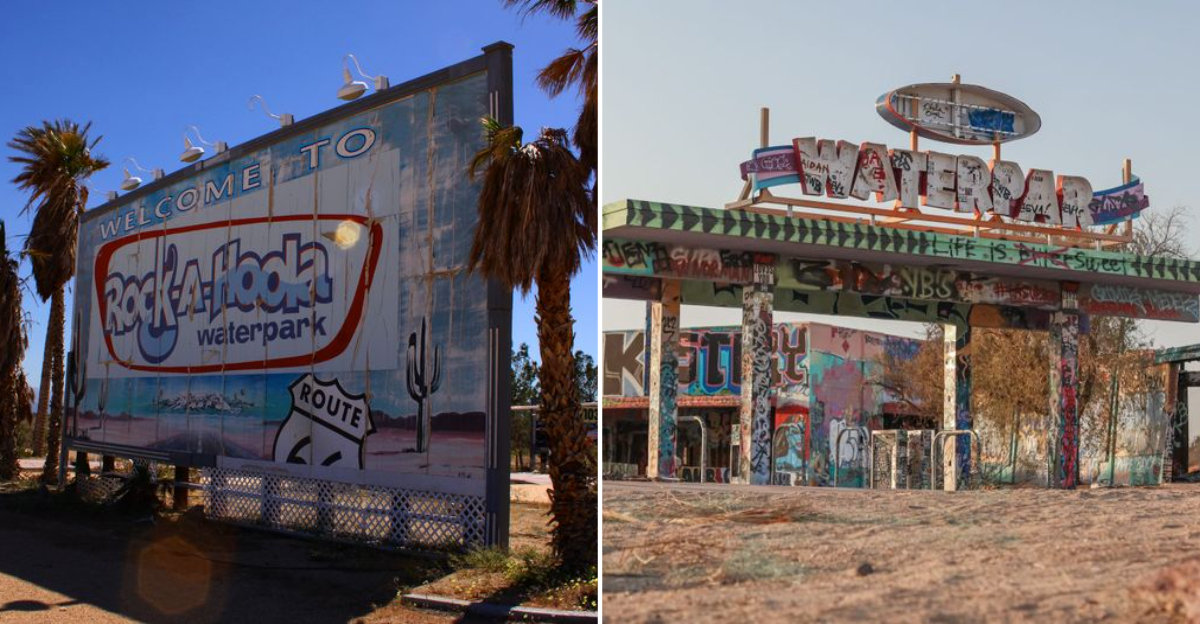
Out in California’s Mojave Desert, alongside Interstate 15, sits the ghostly remains of what was once a thriving waterpark.
Lake Dolores, later rebranded as Rock-A-Hoola, first opened in 1962 and finally shut its gates for good in 2004.
Today, empty pools, foundation remnants of slides, and sun-scorched buildings create an eerie landscape that has become a magnet for urban explorers and photographers. This forsaken oasis tells the story of ambition, decline, and the strange beauty found in decay.
The Site Itself: Lake Dolores Waterpark
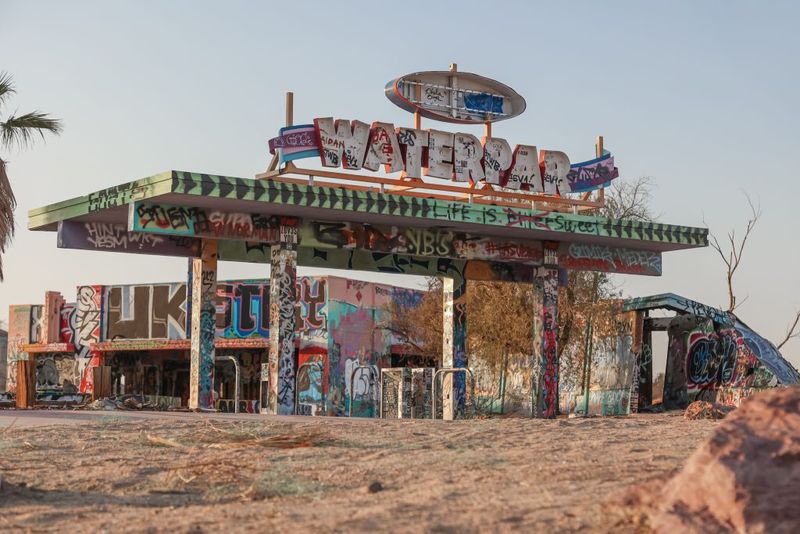
Newberry Springs holds one of the Mojave’s strangest sights: a waterpark that time forgot. Perched off Interstate 15 near Harvard Road, Lake Dolores opened in the swinging sixties and cycled through three names before finally closing in 2004. The desert heat hasn’t been kind, paint peels, concrete cracks, and tumbleweeds drift through what used to be family fun central.
What makes this place genuinely spine-tingling? Picture vast empty basins baking under relentless sun, graffiti-tagged walls, and skeletal structures that once echoed with laughter. Urban explorers flock here for haunting photo ops, though trespassing is strictly enforced since it’s private property.
Rock-A-Hoola’s rebrand couldn’t save it from economic reality and desert isolation, leaving behind a monument to faded dreams.
The Main Pools and Canals
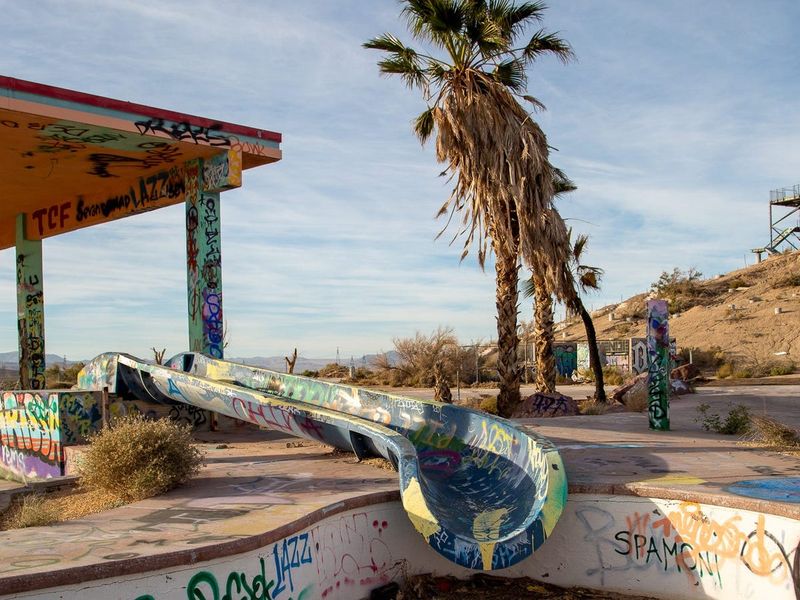
Massive concrete basins sprawl across the property like forgotten craters on an alien planet. These once-sparkling pools hosted thousands of splashing kids, but now they’re bone-dry and filled with desert sand blown in by relentless winds. The lazy river sections snake through the grounds, their fiberglass slide hardware long since removed, leaving only concrete canals and structural remains.
Graffiti artists have claimed these canals as their canvas, covering every available surface with tags and murals. Broken tiles jut out at odd angles, creating a mosaic of neglect. The infrastructure remains surprisingly intact, a testament to the solid engineering beneath the decay.
Walking through these empty waterways feels like exploring Atlantis after the ocean drained away—haunting, beautiful, and deeply unsettling.
The Hill of Speed Slides
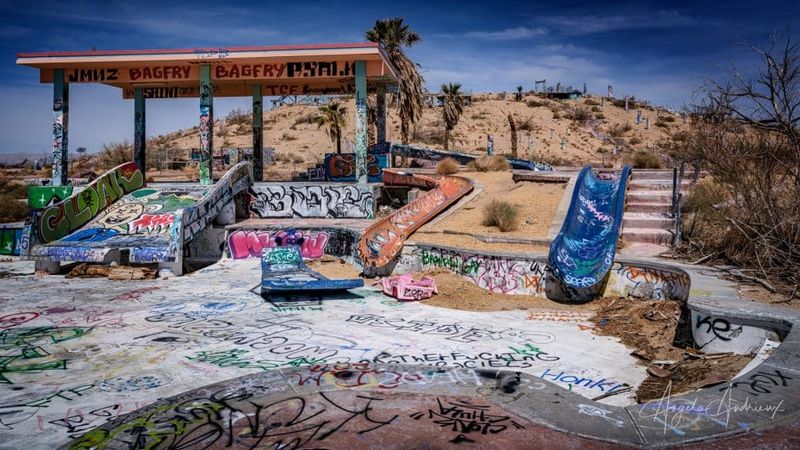
Back in its heyday, Lake Dolores boasted eight side-by-side steel speed slides that launched thrill-seekers down a roughly 150-foot, 60-degree incline. Riders would shoot roughly 150 feet before skimming across the lake below, no fancy safety features, just pure adrenaline and questionable physics.
The slides themselves vanished years ago, but the artificial hill still dominates the landscape. Concrete footings mark where each slide began its terrifying descent.
This rough-and-ready engineering helped establish Lake Dolores as one of America’s pioneering waterparks, proving that desert entrepreneurs weren’t afraid to push boundaries. Standing atop that hill today, you can almost hear the screams echoing across decades of rust and ruin.
The Stand-Up V-Slides
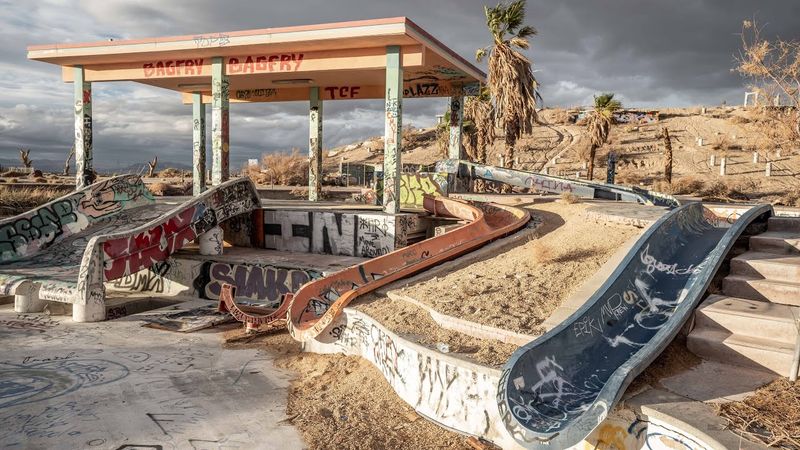
Imagine standing upright while plummeting down a V-shaped slide that launches you 15 feet above water—sounds terrifying, right? That’s exactly what Lake Dolores offered with its stand-up V-slides, attractions that would give modern safety inspectors heart palpitations.
These wild contraptions represented peak ’70s waterpark madness, when liability waivers were just starting to become a thing. Today, only pads and frames hint at where these death-defying rides once stood. The approach areas remain visible, though nature and vandals have worked together to obscure much of the original layout.
You can still spot the launch platforms if you know where to look, silent monuments to an era when fun trumped caution.
The Burned-Out Arcade Ruins
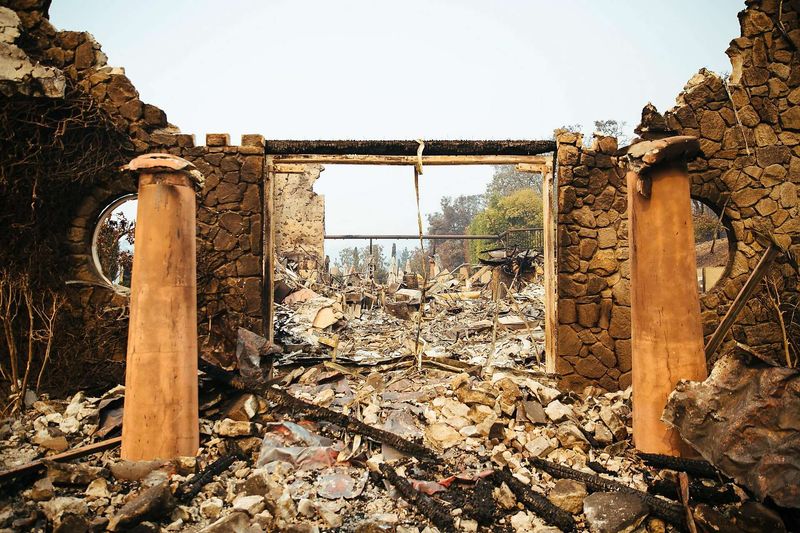
An arson fire in 2018 destroyed the former Lazy River Café and arcade structures, consuming them in flames that added another layer of tragedy to the already-abandoned park. What fire couldn’t finish, time and weather have been slowly erasing. Blackened foundations and debris fields mark where kids once pumped quarters into arcade machines and families grabbed burgers between slides.
The scorched landscape creates the site’s most genuinely disturbing corner. Twisted metal frames poke through ash-stained concrete, and the smell of old smoke still seems to linger on hot days.
This destruction-on-top-of-decay gives Rock-A-Hoola its reputation as California’s creepiest abandoned attraction, nature’s slow reclamation accelerated by human malice into something almost apocalyptic.
The Entrance and Service Buildings

First impressions matter, and Lake Dolores’s entrance area now makes quite the haunting statement. Dilapidated service buildings stand like tired sentinels, their walls completely covered in tags and street art. Broken windows gape like hollow eyes, and scattered signage remnants hint at the park’s multiple identity crises.
The famous “Rock-A-Hoola” sign that graced countless urban exploration photos has been heavily vandalized or removed in recent years, and only fragments occasionally remain. Palm tree rows still line the entrance drives, though many have died or gone scraggly from lack of water.
These skeletal structures telegraph exactly where excited families once streamed in, ready for desert aquatic adventures that nobody offers anymore.
Pop-Culture Filming Location
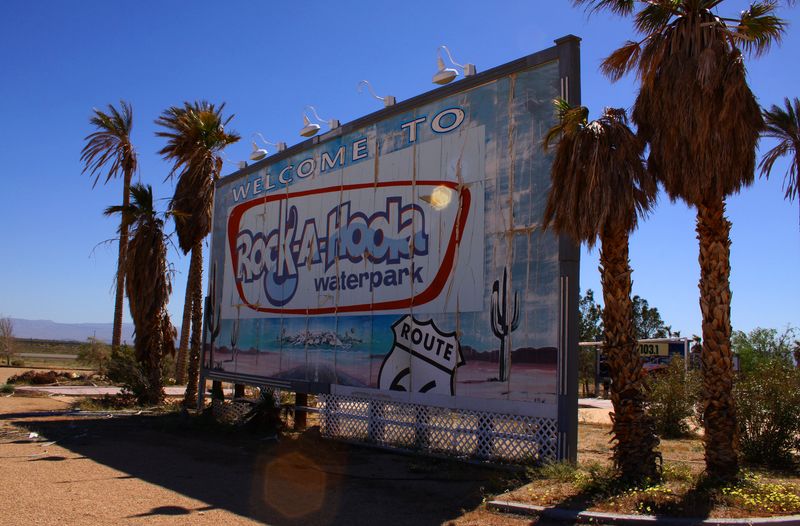
Hollywood loves a good ruin, and Rock-A-Hoola has starred in several productions since closing. MTV’s “Rob & Big” filmed here in 2008, Kesha filmed part of her “High Road” video among the ruins in 2020, and while some fans claim BTS used the site for their 2022 “Proof Live” set, this has not been officially confirmed. These shoots explain the random props and skate features you might spot in photos.
Film crews appreciate the apocalyptic vibe without needing expensive set construction. The location provides instant atmosphere for post-apocalyptic, dystopian, or rebellious themes. Each production leaves traces—painted walls, constructed ramps, or abandoned set pieces that blend with the existing decay.
This pop-culture attention keeps Lake Dolores in public consciousness, transforming it from forgotten failure into iconic urban exploration destination.
Access Status and Trespassing Warnings
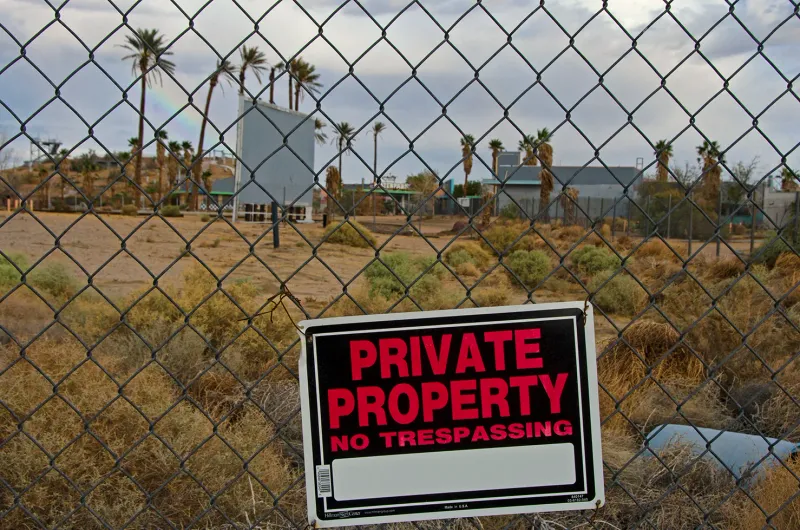
Before you grab your camera and head out, understand this crucial fact: Lake Dolores is private property, and trespassing is actively enforced. The site has been closed since 2004, and despite periodic redevelopment rumors, nothing has materialized. Security patrols the area, and local law enforcement takes violations seriously.
You can view the ruins from public roads, Interstate 15 offers glimpses, and Harvard Road runs nearby. Many dramatic photos you see online were taken illegally, and photographers have faced fines and arrests. The property owners have installed fencing and signage to deter explorers.
Respecting property rights is essential, entering without permission is illegal and can result in prosecution. Viewing the site from public roads keeps it accessible and helps preserve what remains for future documentation.
